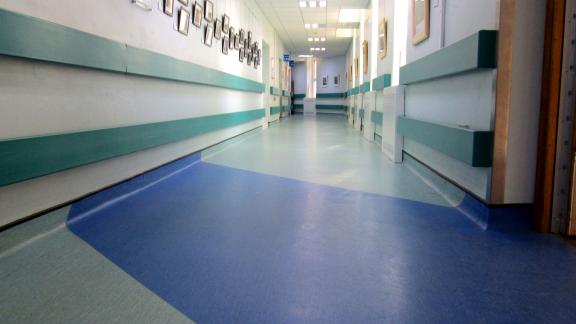Purpose
This guidance document aims to provide clarification to employers and doctors about what prospective cover is, when it is in operation, and how this affects average hours calculation for doctors and therefore their pay.

Introduction
As part of the 2018, doctors and dentists contract review, prospective cover for study leave was included in version 9 of the 2016 terms and conditions.
To provide some consistency with the application of prospective cover for study leave for the purposes of average hours calculation, NHS Employers and the British Medical Association (BMA) have published this joint guidance.
The guidance aims to provide clarification to employers and doctors about:
- what is prospective cover
- when it is in operation
- how this affects average hours calculation for doctors and therefore their pay.
Employing organisations locally determine the processes for how study leave is managed and taken.
Prospective cover is in operation when:
- trainees are required to provide internal cover for colleagues on the rota when they take study leave
- shifts attracting an enhanced rate of pay or an allowance are required to be swapped for study leave.
Employing organisations should factor this into the calculation of the average weekly hours of work and pay for that rota.
Prospective cover does not apply when:
- employing organisations have alternative arrangements for covering study leave
- internal cover or swaps are not required.
Employer feedback highlighted that the inclusion of the average weekly hours varies between employers nationally, with some averaging study leave and others including the full allowance.
This guidance sets out that the default should be to include the full study-leave allowance. However, in certain circumstances, it can be appropriate and justifiable for an employer to adjust the contractual study leave allowances to a lower amount.
Background
One of the agreed outcomes of the 2018 review was that where prospective cover for study leave was in operation on a rota, then an employer would be required to reflect this within the calculation of the average weekly hours of work and pay for that rota. The relevant section of the framework agreement is copied below.
24. Prospective cover for study leave
24.1 Employing organisations locally determine the processes for how study leave is managed and taken. Where trainees are required to provide internal cover for colleagues on the rota when they take study leave or if shifts attracting an enhanced rate of pay or an allowance are required to be swapped for study leave, prospective cover is in operation. This must be factored into the calculation of the average weekly hours of work and pay for that rota. Where employing organisations have alternative arrangements for covering study leave where internal cover or swaps are not required, prospective cover does not apply.
This agreement was reflected within version 7 of the 2016 TCS, which was published in November 2019. In accordance with the implementation timeline the provision was came into effect from February 2020 onwards. The relevant sections with the 2016 terms and conditions (TCS) are paragraph 14 of schedule 4 and paragraphs 38-39 of schedule 10, these are copied below.
Schedule 4
14. A standard full-time generic work schedule shall be for a minimum of 40 hours and a maximum of 48 hours per week, averaged over a reference period defined as being the length of the rota cycle, the length of the placement or 26 weeks, whichever is shorter. A less than full time generic work schedule shall not exceed 40 hours, averaged over this same reference period. When calculating the average total hours, the number of days’ leave (including, annual leave, public holidays, and relevant study leave where prospective cover is in operation) that would be taken by a doctor, on average, across the length of the rota cycle will be deducted from the rota, and the remaining hours will be divided by the remaining weeks (including part-weeks) in the cycle. For example, in an eight-week cycle with six days’ leave deducted, the total remaining hours would be divided by 6.8 weeks. [Emphasis added]
Schedule 10
38. Where shifts attracting an enhanced rate of pay or an allowance are required to be swapped to take study leave (as described in paragraph 10 above), or if doctors are required to provide internal cover for colleagues on the rota when they take study leave, then prospective cover is in operation. In such situations, doctors’ study leave allowance for the rota must be factored into the calculation of the average weekly hours of work and pay for that rota. This must be calculated in the same manner as described in paragraph 14 of schedule 4.
39. Where employing organisations have alternative arrangements for covering study leave, where internal cover or swaps of shifts are not required, prospective cover does not apply.
What is prospective cover for study leave?
The term prospective cover refers to where there is a requirement placed in advance upon a doctor to cover the absence of colleagues when they are taking leave from the rota. The term also captures when a doctor is unable to take leave against shifts which attract a pay enhancement (ie, night shifts) or additional pay allowance (ie, non-resident on-call shifts or weekend shifts).
Prospective cover is always in use for annual leave, this is why doctors are unable to take shifts which attract an enhancement or allowance, unless they have arranged to swap the shift with a colleague, or the employer has agreed that the shift will be covered a locum.
For study leave, employers do take different approaches to ensuring that service provision is not affected by doctors being absent from the rota due to study leave. Some employers choose to cover absences by using locums or by ensuring that the rota has sufficient spare capacity to ensure that the rota can continue to deliver the required service even if some members of the rota are absent on study leave. However, the vast majority of employers do utilise prospective cover for study leave.
When is prospective cover for study leave in use?
Two simple checks can be undertaken to assess whether prospective cover is in use on a rota. These are:
- Are doctors required to provide internal cover for colleagues on the rota when they take study leave?
- Yes – prospective cover is in use
- No - continue to question 2.
- Are junior doctors allowed to take study leave against any shift on the rota without arranging a shift swap with a colleague to cover their shift?
- Yes – prospective cover is not in use
- No – prospective cover is in use.
If prospective cover is in use, then proceed to the next section.
If prospective cover is not in use, then no further action is required beyond informing the doctors in question on the rota that they are able to request leave against any shift on the rota. This does not mean that an employer has to approve all requests. An employer, as with annual leave, has to take into account service provision when reviewing requests. However, where prospective cover is not in use, a doctor is entitled to request study leave against any shift and the expectation should be that the request will be approved if sufficient notice has been provided. Unless there are exceptional circumstances, which would mean the approval of this request would compromise service provision.
How does the application of prospective cover to study leave impact the average hours calculation?
Where prospective cover is in use for study leave, this means that study leave has to be accounted for within the average weekly hours calculation in the same manner that annual leave is accounted for.
Below is the calculation method used for determining a doctor’s average weekly hours under the 2016 TCS. It consists of three main parts:
- Convert a doctor’s leave entitlement into hours, and separately into weeks.
- Deduct the leave entitlement in hours from the total hours rostered, and separately deduct the leave entitlement in weeks from the length of the rota in weeks.
- Calculate a trainee’s average weekly hours for pay purposes, while accounting for their leave entitlement.
This process is set out in full below, with a demonstration of the impact of including study leave on average weekly hours.
Average weekly hours calculation
The allowance for leave calculation for doctors requires the input of the following variables:
A = Leave entitlement in days (annual leave + statutory days + study leave)
B = Rota cycle in weeks
C = Length of normal day
D = Total hours in rota cycle
Using these inputs, we calculate the following:
E = Leave per rota cycle in days ((A*B)/52)
F = Leave per rota cycle in weeks (E/5)
G = Leave per rota cycle in hours (E*C)
H = Remaining hours in rota cycle after leave is deducted (D-G)
I = Remaining weeks in rota cycle after leave is deducted (B-F)
Worked example:
The below is based upon an eight-week rota for a group of ST2 doctors who are rostered to work 360 hours across the length of the rota.
| Stage | Description | Outcome without study leave included | Outcome with study leave included |
| A | Leave entitlement in days (annual leave + statutory days + study leave where applicable)*
| 35 | 65 |
| B | Rota cycle length in weeks | 8 | 8 |
| C | Length of standard day for the rota (hours)** | 8 | 8 |
| D | Total hours in rota cycle (hours) | 360 | 360 |
| E | Leave per rota cycle in days ((A*B)/52) | 5.38 | 10 |
| F | Leave per rota cycle in weeks (E/5) | 1.08 | 2 |
| G | Leave per rota cycle in hours (E*C) | 43.08 | 80 |
| H | Remaining hours in rota cycle after leave is deducted (D-G) | 316.92 | 280 |
| I | Remaining weeks in rota cycle after leave is deducted (B-F) | 6.92 | 6 |
| J | Average weekly hours (H/I, subject to rounding up to nearest quarter hour) | 45.78 (46.00 hours after rounding)
| 46.67 (46.75 hours after rounding) |
* As these doctors are at the ST2 grade, with four years of NHS service, their leave is comprised of; 27 days annual leave, 8 public holidays, and 30 days of study leave.
** The length of a standard day for a rota is determined by assessing the most common shift on the rota which does not attract any pay enhancement or pay allowance.
Can it be appropriate for the employer to adjust the study leave allowance for a doctor when inputting their allowances into the average weekly hours calculation?
As per the contract, study leave is up to the limits described in the table below.
| Grade | Days per annum |
| Foundation doctor year 1 (FY1) | 15 days |
| All other doctors in training | 30 days |
The default should be to include the full study leave allowance, however in certain circumstances, it can be appropriate and justifiable for an employer to adjust the contractual study leave allowances to a lower amount. This is only justifiable where an employer has provided protected rostered time within the rota, for an activity which the doctor would normally be required to take study leave for.
Accordingly, for FY1 doctors study leave does not typically have to be accounted for within the average weekly hours calculation, as these doctors are usually provided with protected rostered teaching and training time.
For all other grade of junior doctors, below are some examples of the circumstances in which a doctor’s study leave allowance may be reduced in reflection of protected training / educational time within the roster, which would typically require a doctor to use study leave to access.
- Regional teaching programmes/training days (for example, general practice vocational training scheme, when a doctor is working in a general practice setting).
- Mandatory courses for which leave has been pre-allocated, which are required by the trainees training programme, rather than their employer / department.
- Foundation Year 2 mandatory courses, which are required.
- Compulsory trainee conferences / meetings where attendees are taken off the rota.
In order for these days to be deducted from the study leave entitlement for the purposes of prospective cover calculation, they should be included in the doctor’s work schedule and the doctor should be able to attend these sessions with no requirement to swap out of any other clinical commitments.
Where an employer believes such an approach is appropriate, they must clearly set out their justification and share this with the Junior Doctor Forum (JDF). The JDF can review this and challenge the justifications provided if they believe they are not appropriate.
FAQ
When can study leave be taken and what are the entitlements?
Requests for study leave should be viewed positively, but with a view to ensuring that the needs of service delivery can be safely met.
Foundation 1 doctors have up to a maximum of 15 days of study leave entitlement to take. All other grades of doctors in training have up to 30 days. Less-than-full-time (LTFT) and academic trainees have equitable access to study leave and budgets.



